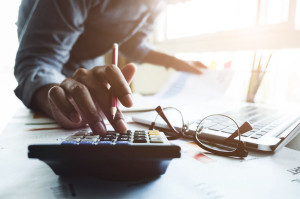 One of the costs of doing business in any industry is bad debt. It’s something that will take place at some point, and having a solid way to reconcile it in your books will be an important step.
One of the costs of doing business in any industry is bad debt. It’s something that will take place at some point, and having a solid way to reconcile it in your books will be an important step.
Bad debt is also something that can be used to adjust taxation in Canada, but only if you’re keeping track of it in a way that can be documented on the country’s tax forms. We’re sharing some info from the government and experts on how that can take place.
What is bad debt?
It’s a good idea to first define bad debt expense and what that means for businesses. The short version, as offered by Quickbooks Canada, is that it’s money you’re owed but that you can’t collect. That is how the Canada Revenue Agency classifies it. The caveat is that all means were used to collect on that debt. Only then can it really be called a “bad debt expense.”
One thing that is important to realize is that bad debt can be considered a loss that you can write off on your business taxes. Two factors need to take place, though, to do this through the CRA:
- You acquired bad debt to earn business or property income.
- You acquired it as capital property sale payment where the business transaction was between two independent parties.
Two other exceptions are important to note. The Canadian government website spells out that debts from either mortgages or from conditional sales agreements are not considered bad debt. It’s also important to note that, according to the government site, “recovery of any bad debt claimed as a capital loss will be treated as a capital gain in the year of recovery.” This could impact the business income claimed on your taxes, so it’s something to plan for.
Capturing bad debt in your bookkeeping
There are also two distinctive ways to record bad debt in your business accounting:
Direct write-offs
This is best if you use cash-based accounting methods, and it’s a way to account for bad debt at any time of the year. Just make sure you enter the debt as it occurs when it first takes place.
Allowances
This is where you reconcile the bad debt at the end of a tax year, something that does commonly take place with most accounting methodologies. At the start of the year, review your receivables and estimate the cost of uncollected debt. At year’s end, debit that ballpark amount from the bad debt expense that actually occurred and reconcile accordingly to make sure the costs/expenses are squared away.
The same empathy you use to work with customers through bad debt is the same technique you can use to work through your own company’s challenges with it. Life happens, as we all know, and planning for the possibility of bad debt will help you keep your expenses in order and cause less stress.
We can also help as we offer a variety of services that make contact with your customers an important part of the prevention plan for accounts that may reach delinquency. You can learn more about our solutions on our website.

